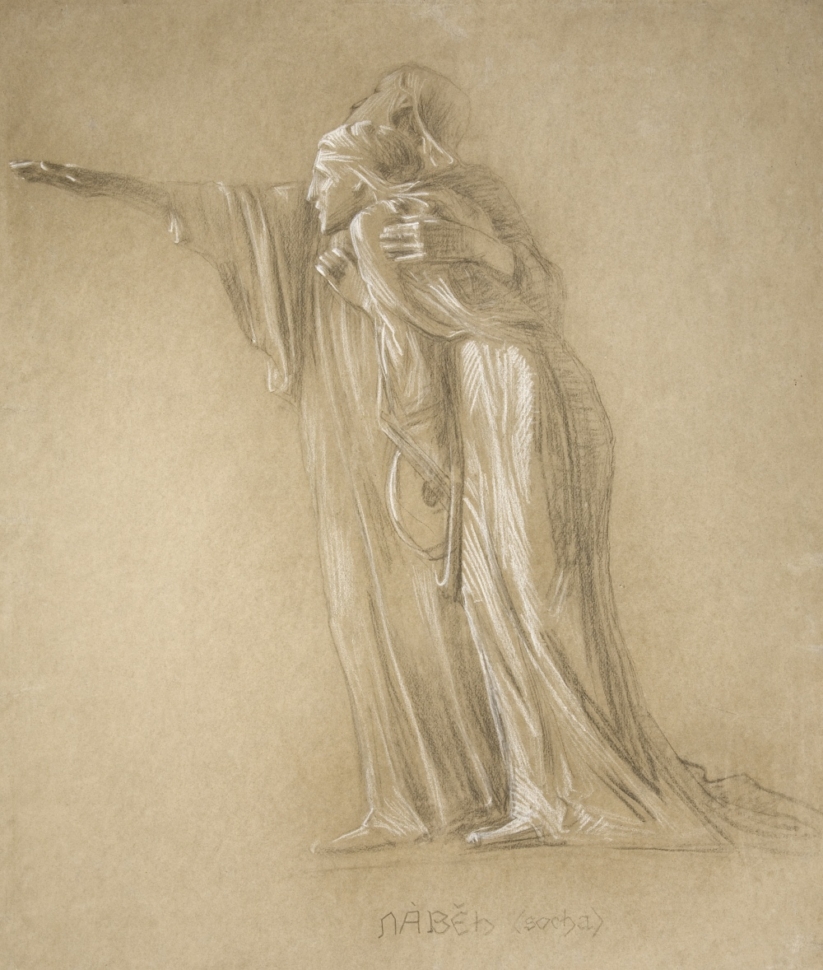František Bílek and Otokar Březina 21. 6. 2022 – 7. 4. 2024
Curators: Hana Larvová and Pavel Myslín
Few artists have had such a strong relationship based on friendship and creative inspiration as the sculptor František Bílek (1872–1941) and the poet Otokar Březina (1868–1929). Both artists placed the emphasis on the spiritual mission of their work above formal aesthetic expression. Their mystical messages therefore became central for the main purpose of their Symbolist work, but despite the apparent harmony of their goals, each of them pursued his own distinctive path.
A letter from enthusiastic Bílek in 1899, responding to Březina’s poetry collection Temple Builders, started a creative collaboration between the two future friends that lasted from the moment they met in 1900 for almost thirty years until Březina’s death in 1929.
Before the two of them met in person in Nová Říše thanks to the initiative of the priests and writers Sigismund Bouška and Karel Dostál-Lutinov, Bílek had illustrated Březina’s poem Quiet Ocean in the Catholic Modernist magazine Nový život and accompanied Březina’s poetry collections Mysterious Distances and Dawn in the West by three lithographs.
One of the most interesting examples of their spiritual dialogue is the series of 8 mystical Symbolist drawings by Bílek illustrating Březina’s last completed poetry collection, Hands. Fascinated by Březina, Bílek published the book at his own expense at the very beginning of their friendship in 1901, again using Nový život as his platform. The book was later published three more times in other editions.
The concept of this book is the most comprehensive example of the symbolic interconnection of word and image that was at the heart of the creative relationship between Bílek and Březina.
In the same year, Nový život also published Bílek’s first book, The Lord’s Prayer, with a foreword by Březina. The collection of 16 texts accompanied by reproductions of Bílek’s drawings, lithographs and sculptures is linked together by Bílek’s original inventiveness, which at that very time allowed for the most impressive artistic realizations.
In the following years, Bílek accompanied 13 editions of Březina’s books with an extensive number of drawings and prints. At the same time, over the years, he also produced a number of portraits of his friend in wood and plaster and as prints and drawings. Březina’s essay Music of the Springs (1903) also directly inspired Bílek’s 1914 series of prints Supreme Justice. Bílek created many sculptures under the influence of Březina’s work, such as The Blind (1901), inspired by the poem Music of the Blind from the collection Hands (1901), and Future Conquerors (1931–1937), influenced by Březina’s essay The Purpose of Struggle (1907). One of them, the sculpture The Artist and His Sister Pain (1929), was chosen by Bílek to be placed on Březina’s grave against the wishes of many, even Březina himself.
The small-scale exhibition at Villa Bílek in Prague features Bílek’s key works inspired by Březina’s poems and prose. The works from the collections of Prague City Gallery are complemented by works on loan from the Otokar Březina Museum in Jaroměřice nad Rokytnou and from the important collection of a private Prague collector.

